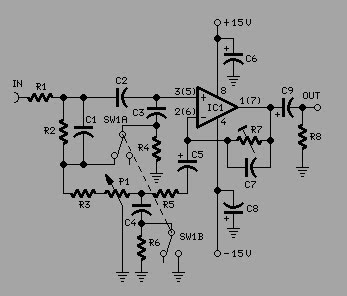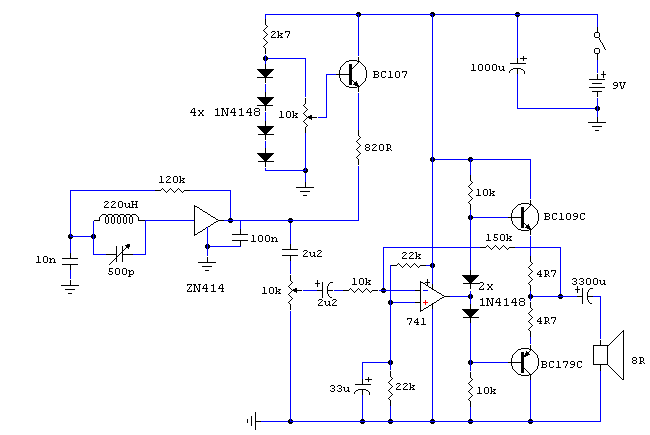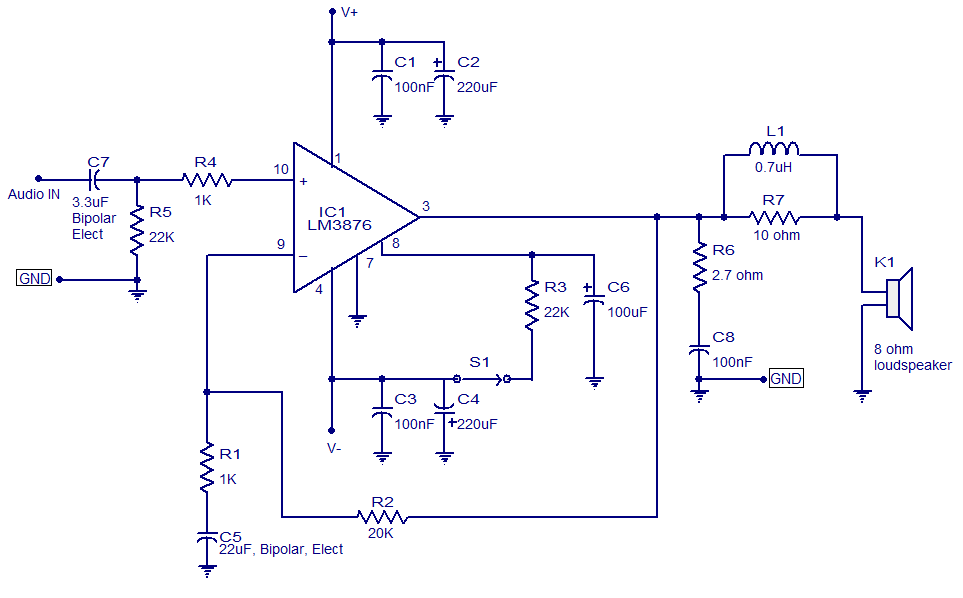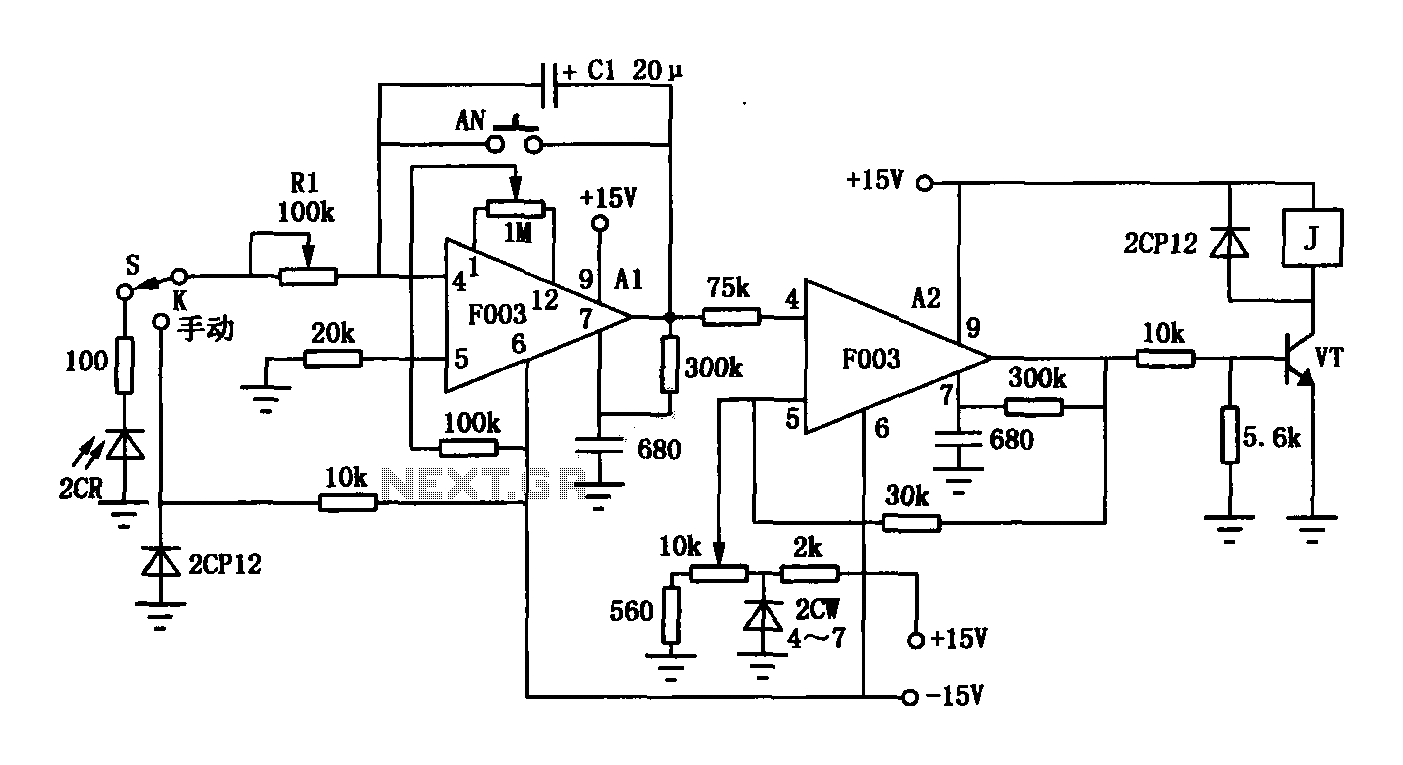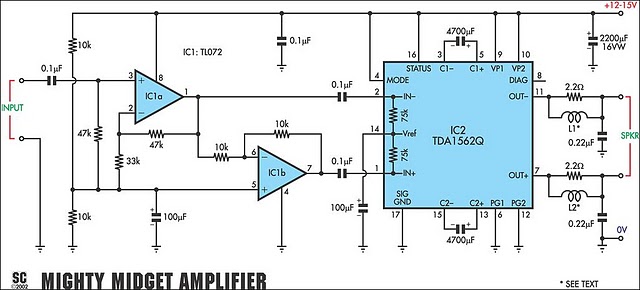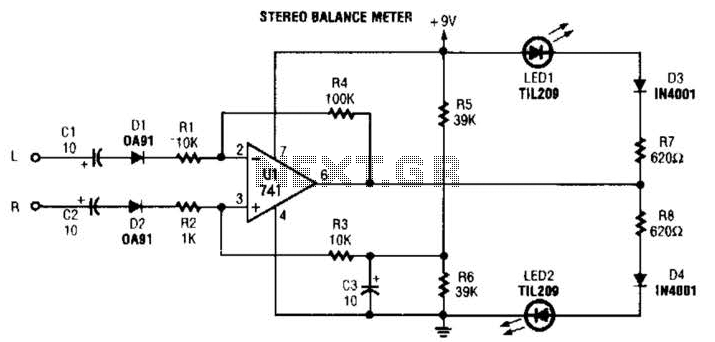
1.5 12W audio amplifier circuit diagram
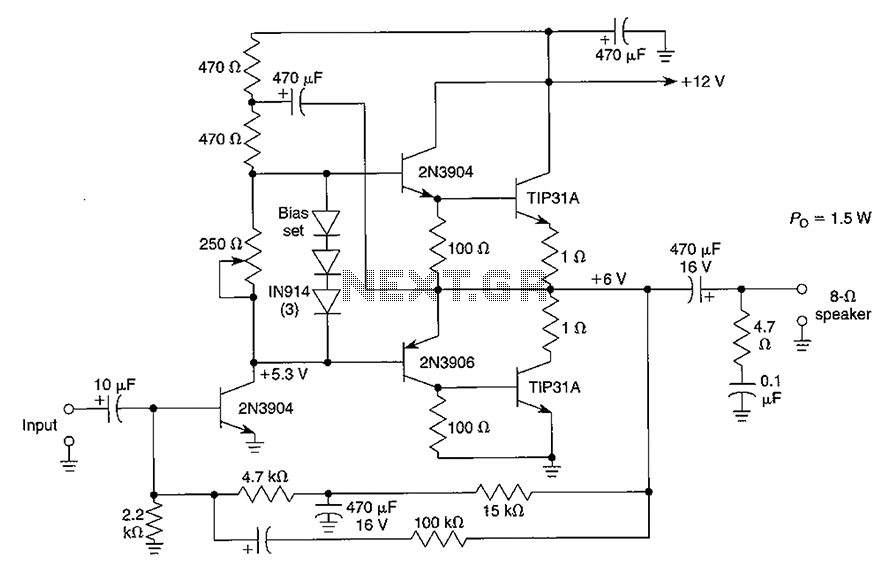
Although the integrated circuit (IC) has largely replaced this circuit, the flexibility of the discrete device design still makes it practical. The components are readily available and cannot easily be eliminated. If desired, a small piece of metal can be used for cooling purposes, such as the TIP31A transistor.
The described circuit utilizes discrete components, which offer a level of flexibility and customization that integrated circuits may not provide. This design approach allows for the use of individual components such as resistors, capacitors, and transistors, enabling the engineer to tailor the circuit to specific requirements. The availability of these discrete components ensures that they can be sourced easily, making the circuit not only practical but also cost-effective.
The TIP31A transistor, a common NPN power transistor, can be incorporated into this circuit for amplification or switching applications. Its ability to handle significant current and voltage makes it suitable for various tasks, including driving loads or acting as a switch in a circuit. For optimal performance, a small metal heat sink can be attached to the TIP31A to dissipate heat generated during operation, thereby enhancing reliability and longevity.
In summary, while integrated circuits dominate many applications, the use of discrete components in circuit design remains a viable option. The flexibility offered by this approach, combined with the practicality of accessible components like the TIP31A, positions this circuit design as a valuable solution in electronics engineering.Although the IC has been replaced to a large extent this circuit, the flexibility of the circuit design of discrete devices still make it practical. The parts are readily avail able, it can not easily be eliminated. If desired, this can be a small piece of metal TIP31A cooling purposes.
The described circuit utilizes discrete components, which offer a level of flexibility and customization that integrated circuits may not provide. This design approach allows for the use of individual components such as resistors, capacitors, and transistors, enabling the engineer to tailor the circuit to specific requirements. The availability of these discrete components ensures that they can be sourced easily, making the circuit not only practical but also cost-effective.
The TIP31A transistor, a common NPN power transistor, can be incorporated into this circuit for amplification or switching applications. Its ability to handle significant current and voltage makes it suitable for various tasks, including driving loads or acting as a switch in a circuit. For optimal performance, a small metal heat sink can be attached to the TIP31A to dissipate heat generated during operation, thereby enhancing reliability and longevity.
In summary, while integrated circuits dominate many applications, the use of discrete components in circuit design remains a viable option. The flexibility offered by this approach, combined with the practicality of accessible components like the TIP31A, positions this circuit design as a valuable solution in electronics engineering.Although the IC has been replaced to a large extent this circuit, the flexibility of the circuit design of discrete devices still make it practical. The parts are readily avail able, it can not easily be eliminated. If desired, this can be a small piece of metal TIP31A cooling purposes.
Warning: include(partials/cookie-banner.php): Failed to open stream: Permission denied in /var/www/html/nextgr/view-circuit.php on line 713
Warning: include(): Failed opening 'partials/cookie-banner.php' for inclusion (include_path='.:/usr/share/php') in /var/www/html/nextgr/view-circuit.php on line 713
